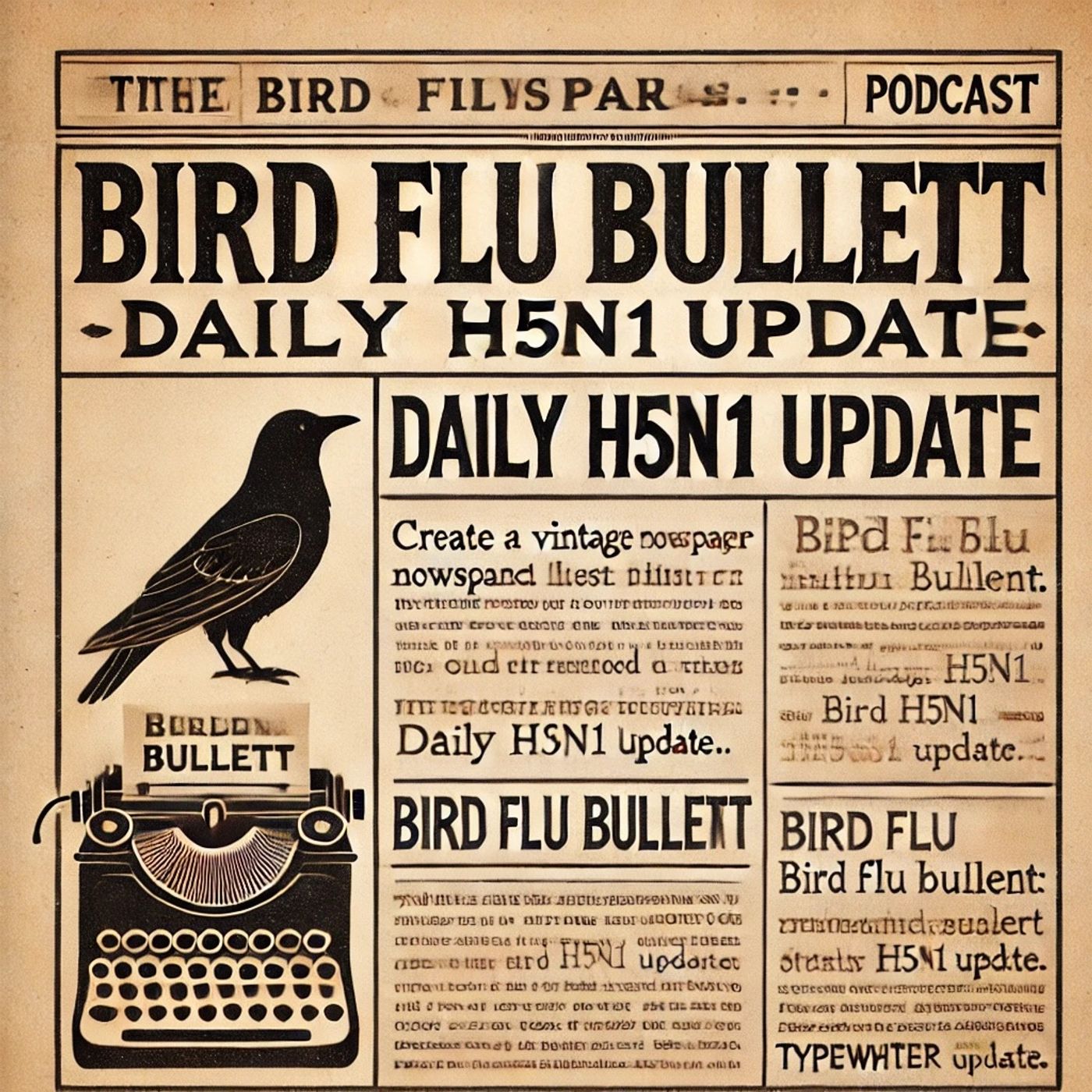Podcast Episode Details
Back to Podcast Episodes
Bird Flu Continues Stable with Low Human Risk as UK Reports New Poultry Outbreaks and Global Cases Remain Unchanged
Bird Flu Bulletin: Daily H5N1 Update
Monday, August 11, 2025
Top stories
- UK detects new poultry outbreaks: The UK Department for Environment, Food & Rural Affairs confirmed highly pathogenic avian influenza H5N1 in commercial poultry near Seaton, East Devon on August 8, with control zones in place; England now totals 67 H5N1 poultry outbreaks in the current wave, with Great Britain not considered free of HPAI under WOAH rules (UK government update, Aug 10).
- Global human cases unchanged this week: The U.S. Centers for Disease Control and Prevention reported 26 human H5N1 infections globally between January 1 and August 4, 2025, including 11 deaths, with no new U.S. cases since mid-February; risk to the U.S. public remains low (CDC situation summary, Aug 1; CDC global human case spotlight, Aug 4).
- Joint international assessment steady: A late-July FAO/WHO/WOAH assessment notes 86 human cases of clade 2.3.4.4b since 2022 across Europe, Asia, and the Americas, mostly with direct animal exposure and no sustained human-to-human transmission (PHF Science summary of FAO/WHO/WOAH assessment, July 31).
Case numbers compared to yesterday
- Human cases: No change reported in the past 24 hours. The latest CDC tally remains 26 global cases for 2025 through Aug 4, with eight deaths in Cambodia, two in India, and one in Mexico; three U.S. cases were reported earlier in 2025 with none since mid-February (CDC global human case spotlight, Aug 4).
- Animal outbreaks: The UK poultry detections announced Aug 8 remain the most recent major confirmed event in the past several days; no new U.S. dairy herd updates were posted by CDC, which now refers animal detections to USDA (UK government update, Aug 10; CDC situation summary, Aug 1).
New guidance or statements
- CDC reiterates the public health risk in the U.S. remains low, continues targeted H5 surveillance, and has shifted to monthly reporting for monitoring and testing metrics, directing animal outbreak details to USDA (CDC situation summary, Aug 1).
- WHO’s regional weekly updates continue to emphasize prompt reporting, PPE for exposed workers, and early antiviral treatment of suspected cases, with no change in risk assessment for the general public (WHO avian influenza updates portal, Aug 1 posting).
Interview snippet
Host: Joining us is Dr. Elaine Porter, infectious disease epidemiologist.
Dr. Porter: The most important signal today is stability. According to CDC, there’s no evidence of sustained human-to-human transmission, and the U.S. risk remains low. However, the UK poultry detections show the virus continues to circulate widely in birds. That matters because more animal infections mean more chances for the virus to adapt. For workers around poultry or dairy cattle, strict PPE, hygiene, and rapid testing remain key. Internationally, the FAO/WHO/WOAH assessment underscores that nearly all recent human infections involve direct animal exposure.
Looking ahead
- We expect updated national and regional surveillance notes by the end of the week, with continued focus on poultry outbreak management in the UK and routine WHO regional situation updates (UK government; WHO weekly updates).
- In the U.S., no immediate change is anticipated in human case counts or risk assessment; watch for monthly CDC surveillance metrics and any USDA updates on dairy herds.
- Researchers are closely monitoring for genetic changes in circulating clades; any shift suggesting increased mammalian adaptation or transmission would prompt rapid guidance updates from CDC, WHO, and national agencies.
Sources: UK government “Bird flu: latest situation in England” (Aug 10, 2025); CDC “H5 Bird Flu: Current Situation” (Aug 1, 2025) and “Global Summary of Recent Human Cases of H5N1 Bird Flu” (Aug 4, 2025); PHF Science summary of FAO/WHO/WOAH assessment (July 31, 2025); WHO avian influenza weekl
Published on 1 week, 5 days ago